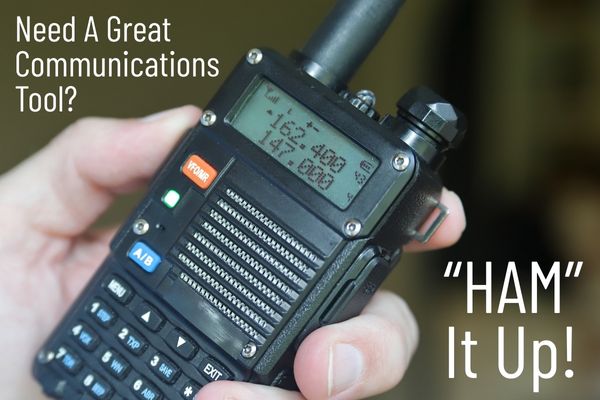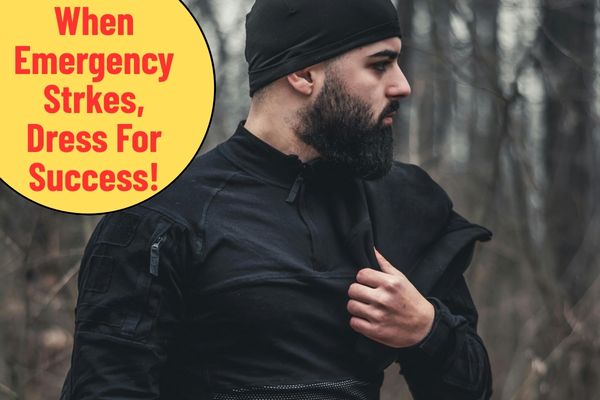What is a Ham Radio?
Amateur radio, often called ham radio, is technically a hobby that involves radio operators called “hams” talking to each other over specific radio frequencies allocated by the government for non-commercial use. In fact, through a ham radio, you can talk to people locally or even more impressively, across the globe.
Here’s the most amazing part: You can communicate without using the internet or a phone.
Instead of relying on cell towers or internet, users transmit directly over the airwaves using their own radios and antennas. It’s a licensed activity connecting a global community of ham radio enthusiasts to chat, experiment with a fun radio technology, and broadcast critical communication during unexpected emergencies.
Why is it Called a “HAM” Radio?
The answer to why it’s called a ham radio may surprise you. Firstly, “HAM” is not an acronym for anything. The term “ham” is just a nickname that emerged in the early 1900s when highly skilled professional telegraph operators would refer to new amateur radio enthusiasts as “hams.”
Ham Radio is Actually a Fun Hobby
Ham radio is a popular hobby that can be a lot of fun but also offers practical uses as well. It’s an ideal hobby for anyone that loves to connect and chat with people. While it’s an amazing opportunity to connect with others in your community, it’s even more exciting to know that you can hold a conversation with other ham operators from around the world.
As a prepper, you can not only stay informed about local breaking news from other ham users but it can also expand your prepper network. So, what starts out as a fun hobby can become a lifeline during emergency scenarios.
How Can a Ham Radio Be a Lifeline for Preppers?
While most “hams” chat through special radio frequencies as a fun hobby, preppers appreciate ham radios for their extended benefits during emergency scenarios.
You see, while preppers today are lucky to have cell phones to provide emergency communication, that luck fades when cell service is lost or the Internet is unavailable. During an unexpected disaster scenario, a ham radio in a bugout bag can provide a lifeline for emergency communications. Ham radios use off-grid power sources to stay on the air. In fact, emergency teams use ham radios to organize help and share important information during disasters. Ham radios can be operated with batteries or generators making them an indispensable resource for emergency services when other communication is not available.
Ham radio operation works with just a radio and an antenna, with no reliance on cell networks or the internet that can be down during natural disasters. Having the ability to communicate through a ham radio is ideal for preppers when standard communication systems fail, making it a valuable must-have addition to any bugout bag.
Ham Radio For Local Emergencies
While ham radios are great for disaster scenarios, it can also provide day-to-day local breaking news such as approaching bad weather, traffic alerts, and perhaps even a current police investigation.
You may be thinking that you can get the same information from television news or on social media but hearing it on the ham radio gives you an advantage. Ham radio operators are a tight group that do their best to provide time-sensitive, accurate, and trustworthy information. Oftentimes, you’ll get breaking news from someone seeing an event right in front of their own eyes.
Learn Ham Skills to Get the Mandatory License
One caveat of a ham radio: You need to gain a license first and learn how to effectively use a ham radio before you can start transmitting across the airwaves. In other words, you can’t just buy a radio set and legally become an amateur radio operator overnight. You need to get your ham radio license from the Federal Communications Commission.
Here are the 3 written exams needed to take for a ham radio license:
<1> Technician test with 35 questions to achieve lowest level of amateur certification.
<2> General test with 35 moderately harder, more detailed questions.
<3> Extra test with 50 questions, to achieve highest level of ham radio certification.
Before taking the exam, you’ll want to take some classes and study as much as possible to fully comprehend everything you need to know to pass the certification tests and get licensed. You’ll want to learn about topics from radio theory and operating practices to FCC regulations. There are many resources available locally and online for studying.
Exam fees range based on where you take the test; typically there’s a small fee of up to $15.00. To pass the tests, you need to score at least a 74% on the exam. After passing the tests, you’ll get a Certificate of Successful Completion of Examination (CSCE). With that certificate, you can then apply for your ham radio license. Once you get your license, look into prepper-related training programs that can offer you expanded learning in emergency communications through a ham radio.
While the process of studying and test taking may seem excessive or inconvenient, it is a beneficial step to verify that you possess the knowledge and ability to operate your ham radio equipment safely and effectively.
Selecting a Ham Radio and Operating Equipment
There are various types of ham radios and equipment available. You can choose from handheld, mobile, base station, and more. A handheld radio is a great beginner radio if you’re new to ham radio operation. (The brand, Baofeng, is a maker of amateur radio handsets that are affordable and versatile.) As you get more experienced, there are more advanced types of radio equipment as well. For emergency purposes, many prepper ham operators carry handheld handsets in their vehicles to be ready for anything.
Types of ham radio equipment:
:: Transceivers are the main base of the ham radio system, allowing operators to send and receive signals.
:: Antennas are required to make the transceiver work, boosting the radio signal, helping it reach longer distances.
:: Accessories for a ham radio make the hobby more fun and efficient like headphones, microphones, and morse code keyboard. Power supplies are also necessary.
Learning Basic Operation and So Much More
Operating a ham radio requires a specific skill set, especially understanding operating procedures and licensing rules and regulations. Learning skills vary from basic functions to efficiently operating a ham radio. And when you master those skills, you can advance to more high-tech operations. Basic functions that you’ll learn right away include transmitting and receiving messages, frequency tuning, adjusting power levels, programming channels, and troubleshooting.
Here is something you may not have known about communicating via a ham radio. While voice communication is the typical way to operate a ham radio, you can also use Morse code (CW) and other digital methods to send text messages and critical data at times when your radio signal is too weak to effectively communicate by voice.
Connecting with Local Hams
The best part of operating a ham radio is the “connections” that you’ll make with local ham radio operators in your community. Local clubs along with the National Association for Amateur Radio offer valuable resources, training, and community events to get the most of your ham radio experience.
Just as preppers join local prepper groups for the outstanding resources one can gain from like-minded preppers, the same holds true for ham radio operators. The connections and relationships you build may prove a valuable commodity during a disaster scenario when emergency communication may be a lifeline.
Connecting With a Worldwide Community of Hams
Joining the ham radio community goes way further than just your local vicinity. It gives you the incredible opportunity to globally connect with other passionate ham radio operators. What starts out as a fun hobby transforms into an expanded network of support for learning ham radio skills, tips, and most importantly, gaining new friends from around the world. Ham radio groups oftentimes provide volunteer communication for community events and critical emergency communications when called upon. It’s a hobby that can make a monumental difference during a crisis.
Emergency Preparedness: Ham Radio Frequency Programming
When it comes to emergency communication, there are many ham radio emergency frequencies that operators should know about. In fact, government agencies may also use the same UHF and VHF frequencies as amateur radio operators to alert the mass audience about a disaster scenario or an extreme weather situation.
Preppers using a ham radio will want to program key emergency frequencies into their ham radio to ensure receiving critical information during a crisis. This includes the NOAA Weather Radio channels for receiving weather updates.
Here are just a few Ham Radio emergency frequencies:
:: 34.90 MHz: Nationwide emergency channel for the National Guard.
:: 39.46 MHz: Emergency communication channel for local and state police.
:: 47.42 MHz: Nationwide relief operations channel for the Red Cross.
:: 138.225 MHz: Primary FEMA channel for disaster relief operations.
:: 154.28 MHz: Local fire department emergency communication channel.
:: 155.160 MHz: Local and state agency channel for search and rescue operations.
:: 155.475 MHz: Local and state police emergency communication channel.
:: 162.40 MHz to 162.55 MHz: Series of channels used for NOAA weather broadcasts.
:: 163.4875 MHz: Nationwide emergency channel for the National Guard.
:: 168.55 MHz: Federal civilian agency channel for emergencies and disasters.
:: 462.675 MHz: General Mobile Radio Service channel for emergency communication and traveler assistance.
Buy a Ham Radio Today, Get Licensed, and Be Prepped For Emergency
According to The National Association of Amateur Radio (ARRL), there are more than 740,000 licensed radio ham operators in the United States today. That’s a staggering number of people understanding the benefits of owning a ham radio. Yet so many more are missing out on this valuable communications tool.
While ham radios make a fun hobby that provide a networking opportunity that expands globally, the key benefit of owning a ham radio may just be for reliable communication during emergencies. The uses are endless when it comes to communicating worldwide even without cell service or an internet connection.
Becoming an amateur radio operator can be a lot of fun. But it also might just save your life should a disaster scenario strike. Go ahead and add a ham radio to your prepper supply. But first, study hard to pass the certification tests, obtain your license, and then rest assured that you have an added level of communication in emergencies.




